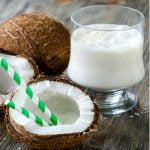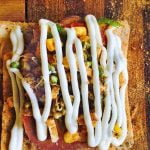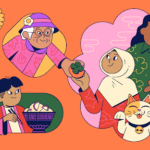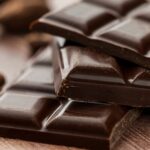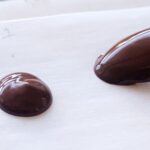Fish and chips, roast and potatoes, eggs and toast, paratha and pickle…. the list is deliciously long
Some menu combinations get hardwired into our memories and preferences. Or sometimes into permanent dislikes. But even if disliked, they are redolent of childhood and one’s parents’ home.
One of my pet dislikes is keema matar — minced mutton cooked with green peas. I can hear a groan of horror because I think I’m in a minority of one person in the world who abhors the dish. Give me aloo keema, gobhi keema, French beans keema or even plain keema keema over that combination. I love peas, sweet, green, tender and juicy, cooked either alone or with potatoes, paneer, spinach, cabbage, anything. But with mince? No. It was served at dinner — because lunch was almost always vegetarian — along with plain yellow moong ki dal and aloo raita, whipped, seasoned yoghurt mixed with boiled potato cubes. The menu was so unpalatable that it took me years to enjoy moong ki dal again.
Arhar (toor) dal was served with rice, not roti. When I got married and started to run a kitchen, the other resident ate only arhar and I was forced to serve and eat it even with roti. But I still love it with steamed white rice, tempered in generous amounts of ghee with mustard seeds and/or cumin, whole red chillies and curry leaves. With or without tamarind. I’m not a sambar lover, so idlis are best, according to me, with coconut chutney.
Soft as pillows
Last week we were driving on GT Road, and stopped for lunch at Sagar instead of one of the usual Murthal or Karnal dhabas that serve tandoori rotis and parathas. At Sagar I knew I wanted the soft, porous pillows, as my daughter calls them, just with chutney, but I was a bit apprehensive that the quality may not be great. It turned out that the idlis were soft, white, fluffy and tender. The combination with coconut chutney worked like reliable magic.
Stuffed parathas with dahi and achar: curd and pickle. A bit of simple green salad, undressed, on the side. This is such a standard combination that I think every single home in North India knows it really well. Or so I thought until the first time I cooked it for the two of us. He asked what else we were having and I was flummoxed, because to my mind, that was it, it was enough. Now, after decades, it is enough and such a favourite that once every few weeks someone asks for it. Parathas stuffed with potatoes, cauliflower, paneer, mooli.
Mooli or radish is a favourite, but seasonal. The children prefer paneer. They’re all consumed with quantities of cold, plain yoghurt and some seasonal pickle. I like the mixed vegetable achar — gobhi, gajar, shalgam, or cauliflower, carrot and turnip — which is sweet and sour with crunchy pieces of vegetables immersed in a thick masala paste of garlic, onions and ginger in a mixture of tamarind and gur, traditional unrefined sugar.
Yellow and slightly crisp
Plain parathas, crisp and golden, are best with potato cooked dry, without gravy, just chopped smallish without peeling, and sautéed in mustard oil with more than a hint of turmeric, whole cumin and torn up dry red chillies. That is so delicious that when I’m under the weather and lacking my characteristic appetite, I know that the bright yellow potatoes, slightly crisped, will definitely make me enjoy my meal. The skin left on adds a rustic flavour and it’s a delight scooping them up in a morsel of hot, fresh-off-the-stove paratha.
My daughter always adds scrambled eggs on the side and though I do see her point, the only accompaniment I really like is pickle: either mango or chillies. This must be the best combination ever invented.
Fish and chips, roast and potatoes, ice cream and mangoes, eggs and toast… these are incontrovertible combinations but there are variations that families create. Moong dal halwa, hot and greasy and sweet, with vanilla ice cream is this family’s. My mother usually had yoghurt with sweet Indian desserts — she said it cut the heaviness and the high sweetness and she always had a helping of dahi, with rasawal, rice cooked in sugarcane juice.
I prefer cream with pies, people like ice cream. But one combination we all love is tandoori roti with any kind of home made mutton curry, be it Afghani, aloo gosht, rogan josh, korma or just a thin red gravy.
Recently my father presented me with a modern gas tandoor. It looks like a large pressure cooker with holes on the bottom. It’s used upside down, with the open mouth on the flame and the hole-y bottom on top. It makes three or so rotis at a time, and once it’s heated up they come quite fast and regularly. But until I got this, we made fake ‘tandoori’ rotis on an upside down tawa, griddle. I wrote about it a few years ago, but the recipe bears repetition.
ULTE TAWE KI ROTI
Kneaded whole wheat flour
A large pan or bowl half filled with water
Gas flame burner — a hot plate won’t work
Heat a tawa/ griddle. Meanwhile, roll a roti about twice the thickness of a phulka/ chapatti, about 1/4-inch thick. With fingertips of both hands, lift it off the chakla/ rolling board and dip in water. Make sure that all of it is wet. Do not leave in water for any length of time, just immerse it for a few seconds — long enough to wet it everywhere. Lift it out carefully — the dough will be wet and pliable, so any rough handling will stretch it. Place it on the hot tawa in such a way that there are no folds.
When the underside is partially cooked, small blisters appear on the upper side. Lift the tawa off the heat and, holding it firmly by the handle, turn it upside down over the fire, so that the uncooked side faces the heat.
Lower the flame to medium. The roti will start getting speckled. Check to see that the colour is turning brown and not black and burnt.
When it is cooked through, the roti will dry and fall off the tawa onto the flame. Using tongs, roast the roti on the fire, making sure that all of it gets evenly browned and crisp. (Pound a few cloves of garlic with salt and mix with chilli powder and melted ghee. Spread thinly on rotis when serving.)
[“source=thehindu”]


